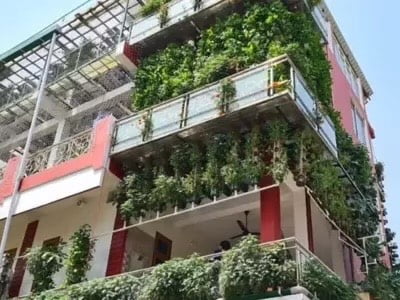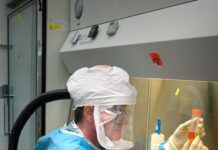Human beings require energy to carry out the daily pursuits of life. The energy we input is measured in terms of calories, and the energy output is measured in either calories or joules. This energy input comes in the form of food that encompasses macronutrients, namely carbohydrates, proteins, and fats, along with micronutrients that include vitamins and minerals.
Energy Input and Nutrient Breakdown: Understanding the Caloric Needs and Food Processing in the Human Body
On average, an adult will require 2,000-2,500 calories of energy from food daily. These values can vary based on age, height, body structure, basal metabolic rate (BMR), body fat percentage, type of occupation, and type of environment, among other factors. The food ingested undergoes further breakdown in the stomach and intestines, making it easier for absorption. The absorbed food is transported through the blood via blood vessels to various organs and organ systems, where it is delivered to cells along with oxygen. Here, further breakdown occurs at the molecular level and cellular respiration, similar to a combustion engine, powers the cell’s internal activities to maintain viability.
You Are What You Eat: The Impact of Diet on Health and the Legacy of the Green Revolution
All in all, every ounce or bite of food we eat directly or indirectly affects our overall health, which is why it is often said, “You are what you eat.” The previous century witnessed widespread changes in the agricultural sector in the form of the Green Revolution, which introduced hybrid crops along with the use of synthetic fertilisers to increase crop yield and the introduction of myriad pesticides to save crops from damage. But was the damage truly averted? What was once considered a revolutionary idea is now looked down upon, with the common population finding ways to replace their existing food products with organically certified food because, in the long run, we were able to fill empty bellies but at the cost of higher health risks by introducing synthetic chemicals into the bloodstream, which sooner or later led to disabilities for the human body.
Modern Agriculture Dilemmas: The Rising Concern Over Synthetic Chemicals in Farming
Taking into consideration the present scenario, farmers do anything and everything to increase the crop yield and size by spraying chemicals onto the crops before harvest and injecting chemicals into the crops via syringe. Aware of this fact, many people reject the purchase and consumption of certain fruits and vegetables, yet many others consume such chemically laced food products on a daily basis, which will sooner or later become a hidden cause of mortality.
The Hydroponic Solution: Revolutionising Farming for Future Generations
Considering the above scenario, what can be a possible solution for our future and the forthcoming generations in general? Hydroponic farming can be an easily affordable, self-sustainable alternative to fulfil such a need. Hydroponics is the science of growing fruits and vegetables through continuously flowing water that is rich in minerals necessary for the optimum growth of the targeted crop.
The Advantages of Vertical Farming: How Hydroponics Outperforms Traditional and Organic Farming
The crops are grown in pipes with drilled holes through which nutrient-rich water is circulated through pumps and then absorbed by the desired plant through capillary action. It does not require a large area unlike traditional fields and can provide twice or even thrice the yield based on the setup maintained. Hydroponics aims at vertical farming compared to horizontal farming so multiple strata can be maintained in a limited space.
Sustainable Choices for Our Future: The Environmental and Health Benefits of Hydroponic Farming
Moreover, keeping in mind the growing water shortage across the globe, hydroponic farming provides a more optimal water utilisation, especially for crops that have a high standing water requirement as the same water is kept in circulation for the growth and seldom requires change. The crops grown in such an enclosed environment are free from pests and insects, which leaves no room for the usage of pesticides and insecticides, and since very little soil is used, artificial fertilisers do not serve any purpose. It has been noted that the yield in hydroponics is far better than in organic farming and the crops are superior both in size and nutrient value. The crops grown through such methods are already available in the market and fetch a high price due to the more organic-centred and chemical-free demand of the customers. Some people have already put the practice into use to grow their own food, and it is not far-fetched to think that soon every family may decrease its dependence on current farmers and be more oriented towards growing their own crops in such systems.
The disadvantage of hydroponics is that it is a costly setup but as demand increases, the cost of raw materials for the setup will likely decrease. When paired with solar energy generation, it will become a perfect green environment beneficial for everyone involved.
Further Reading




